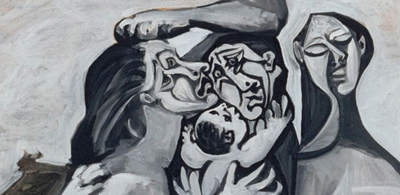The Firing of Zahi Hawass
On July 17, 2011, the world’s best known Egyptologist, Zahi Hawass, was fired from his position as Egypt’s Minister of Antiquities. The first news I received of Hawass being discharged came from Max Fisher’s article, Egyptians Celebrate Firing of the ‘Mubarak of Antiquities’, published in the Atlantic on July 18, 2001. Hawass was sacked by the country’s ruling army council, which reshuffled the government cabinet to purge it of Mubarak henchmen, a move widely seen as an attempt to placate the millions of Egyptians involved in the nation’s revolutionary upsurge.
In February of 2011 I wrote The Museum at the Center of Egypt’s Revolution, an article about Mr. Hawass that detailed his record as an ardent supporter of the former dictator Hosni Mubarak (who is scheduled to go on trial Aug. 3 over charges of corruption and having given the orders to murder dozens if not hundreds of pro-democracy demonstrators). Since publishing my article I have been waiting for news that Hawass was either resigning or being arrested, so Fisher’s announcement in the Atlantic came as no surprise.
Typical of Western press coverage of Mr. Hawass’ downfall, the New York Times simply mentioned on July 22, that Hawass had drawn criticism from critics “for his ties to the Mubaraks, his role in sending artifacts abroad on traveling exhibitions and his relationship with National Geographic, which paid him up to $200,000 a year as an explorer-in-residence.” There is much more to say about why Hawass has been such a controversial figure for Egyptians.
My abovementioned article not only addressed how Egyptian archaeologists and state museum workers viewed Hawass as running the nation’s archaeology institutions for his own personal profit, it focused on another very disturbing possibility; as Egypt’s chief archaeologist, the Secretary General of the Egyptian Supreme Council of Antiquities, and the Minister of Antiquities (a newly created cabinet post given to him by Mubarak just prior to the dictator’s demise), Hawass certainly had to be aware that the Egyptian Museum was being used by Mubarak’s army as a detention center where prisoners were brutally interrogated and tortured.

On February 9, 2011 the Guardian published the hair-raising Egypt’s army ‘involved in detentions and torture, a story that brought to light allegations made by Human Rights organizations that Mubarak’s soldiers had “secretly detained hundreds and possibly thousands of suspected government opponents since mass protests against President Hosni Mubarak began, and at least some of these detainees have been tortured.” The article reported that “some of the detainees have been held inside the renowned Museum of Egyptian Antiquities”. While the article published the testimonies of those who claimed to have been mistreated while held inside the museum, the report did not mention Hawass – who nevertheless was in charge of the museum.
Even after the fall and arrest of President Mubarak, reports about the Egyptian Museum being used as a detention center continued to emerge. On March 17, 2011, the Egyptian Al-Masry Al-Youm, published the testimonies of those who had been arrested by Egyptian soldiers during a peaceful sit-in at Tahrir Square on March 9. Dozens of detainees held a press conference where they said that on March 9 they had been “dragged into the Egyptian Museum where they endured six hours of torture and mistreatment.” Egypt’s largest news organization, Al-Ahram, also published these accounts, reporting that “According to eyewitnesses, thousands are still being held in the military camps with detainees packed inside the Egyptian Museum, which has been turned into a torture chamber by the army.”

On March 18, 2011, CNN published a detailed account concerning 23-year-old student, Ramy Essam, who had also been arrested at Tahrir Square on March 9. Essam was a singer who put the revolution’s demands to music, and his wildly popular songs were sung by tens of thousands of people at mass rallies against the Mubarak dictatorship.
Soldiers arrested Essam and “hauled him to the nearby Egyptian museum where uniformed soldiers tortured him for four hours and cut off his shoulder-length hair.” Essam insists the authorities tortured him with electric shocks, “They took off my clothes. They used sticks, metal rods, wires, whips.” In this amateur video Essam is interviewed right after his torture, the film showing his slashed, bruised, burned, and scarred back. NPR published an account of his ordeal at the Egyptian Museum, which includes a video of Essam singing before a massive crowd at Tahrir Square before Mubarak was ousted. One has to ask, where was Zahi Hawass when the museum he ultimately had supreme oversight over was transformed into a torture center by Mubarak’s security forces?
On April 9, 2011, well over 100,000 Egyptians gathered at Tahrir Square to demand that the army put former President Hosni Mubarak on trial. The next day hundreds of protestors who had re-occupied Tahrir were attacked by troops of Egypt’s new military council, demonstrators were sent fleeing by soldiers armed with batons, tasers, and firing live ammunition; dozens were arrested. Quoting Al Jazeera’s report on the army attack, “Other central security and army forces had been stationed to the north of Tahrir Square next to the Egyptian Museum, which military police have turned into a makeshift detention centre.”
On April 11, 2011, the New York Times reported that an Egyptian blogger by the name of Maikel Nabil was sentenced to 3 years in prison by the county’s military council. His lawyer referred to him as “the first prisoner of conscience in Egypt after the revolution.” His crime? Mr. Nabil was charged with spreading information previously published by Amnesty International regarding “the torture of those detained inside the Egyptian Museum.”
When Zahi Hawass was unceremoniously dismissed on July 17, archeologists, museum staffers, and others were there to met him with angry chants as he left his office at the Supreme Council of Antiquities and hurriedly got into a cab. Hundreds of protesters surrounded the cab and blocked it from moving as they unleashed a torrent of insults at Hawass. The entire event was captured on an amateur video, which surely documents how Hawass is actually regarded by many Egyptians.
Of course not everyone is a critic of Mr. Hawass. For instance, the organizers of the coveted Freedom to Create Prize picked Hawass to hand out awards at their 2010 Freedom to Create awards ceremony held in Cairo, Egypt. The organization annually presents cash prizes to international artists and arts groups that “promote social justice and inspire the human spirit.” On the Freedom to Create website, the organization wrote:
“Supporting the Freedom to Create Prize, the Secretary General of Supreme Council of Antiquities and renowned Egyptologist, Dr. Zahi Hawass said, ‘Providing the opportunity for creativity can inspire and unite individuals, breaking down social barriers and fostering a greater sense of peace and unity within nations. The 2010 Freedom to Create Prize entrants are a testament to the human spirit and should be an example to us all.'”
Perhaps in 2011 the Freedom to Create organizers will do a better job of vetting their award presenters. That, and giving their top cash prize to tortured Egyptian singer, Ramy Essam, would go a long way towards reversing their error of associating with Hawass. Such a gesture would provide a small modicum of justice to those who were tortured and abused at the Egyptian Museum.
Zahi Hawass recently told the New York Times that “I am retiring to focus on my own work, as a scholar and a writer,” adding that he looks forward to “living quietly as a private person, away from politics.” That is all well and good for Hawass, who one must presume is still being paid $200,000 a year by National Geographic – which lists Hawass as its “Explorer-in-Residence Emeritus“. However, blogger Maikel Nabil is at this moment serving his 3 year sentence for the crime of writing that the army tortured and abused prisoners at the Egyptian Museum. While Mr. Hawass’ speaking engagements bring him $15,000 each, there are dozens of Egyptians who are demanding justice over their being detained and tortured at the Egyptian Museum.





